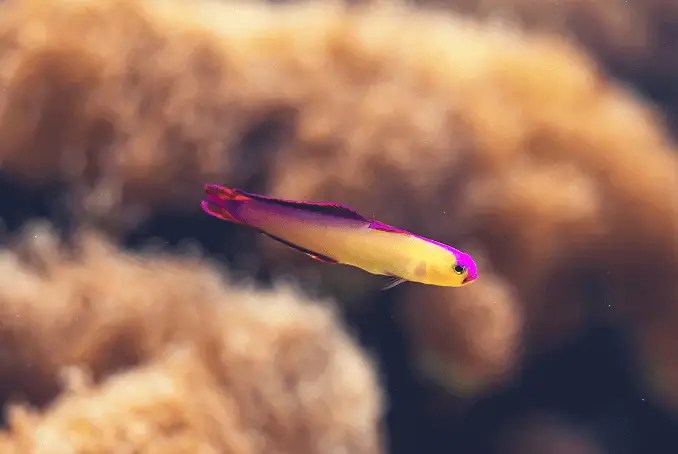
You've probably heard that protecting saltwater fish is more difficult than protecting freshwater fish.
Freshwater fish are generally more hardy than saltwater fish; However, there are several saltwater fish that are quite hardy.
While there are many common saltwater species, this text only selects fish that are suitable for students.
Clearly, people have completely different opinions about which species are suitable for students, so for clarity, the following fish rules meet these requirements:
- Does not require a giant tank (over 4 feet)
- Resistant
- Not aggressive
fire fish
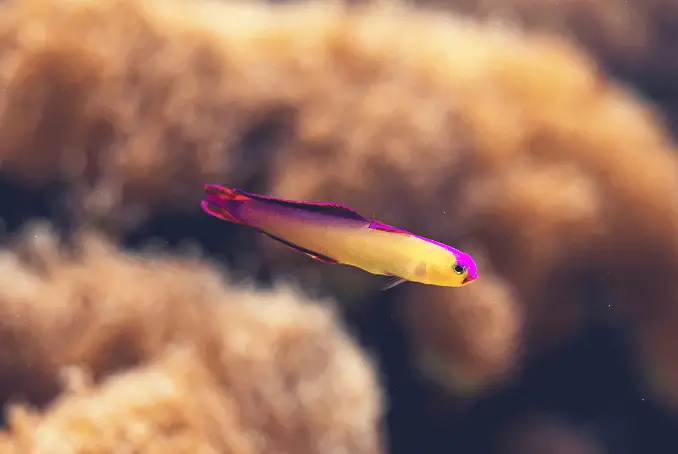 from the family GobiidaeThe fire fish has an incredible color, a super personality and a uniquely shaped physique.
from the family GobiidaeThe fire fish has an incredible color, a super personality and a uniquely shaped physique.
Also recognized are the firefish goby, Nemateleotris magnifica, the fire goby or the fire dart fish.
Due to its timid and timid nature in the wild, this fish requires a lot of hiding places on rocky bluffs which it would use if it feels pressured.
This fish requires common lighting circumstances and a common current. It will probably rise too, so the tank will need a tight-fitting lid.
Quick stats
- Minimum tank size: 20 gallons
- Maximum measurement: 3”
- Care stage: simple
- Temperament: Pacific
- Weight reduction plan: Carnivore
two-color blenny
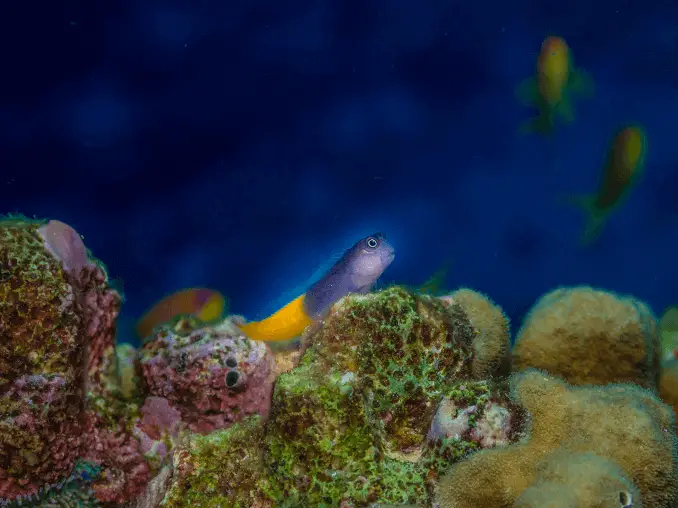 There are many completely different versions of Blennies, perhaps one of the most common and widely available is the Bicolor Blenny; otherwise it is often referred to as Two-Colored Blenny.
There are many completely different versions of Blennies, perhaps one of the most common and widely available is the Bicolor Blenny; otherwise it is often referred to as Two-Colored Blenny.
They have an exceptional personality and undergo a wide variety of color changes during breeding. The male is usually larger than the female.
This fish requires a lot of scattered rocks to hide in, and although they are generally peaceful tank mates, they have also been known to choose related species such as different blennies, darter fish and smaller gobies.
Quick stats:
- Minimum tank size: 30 gallons
- Maximum measurement: 4”
- Care stage: simple
- Temperament: Pacific
- Weight reduction plan: Herbivore
Blenny Lawn Mower
Another Blenny that appears in this roundup of common beginner fish is the Lawnmower Blenny; Also known as sailfin or seaweed blenny.
It has a very distinctive appearance with a visible tan color and large eyes, and although it would grow up to 5 inches, it is still a peaceful fish.
Like the piebald blenny, it needs plenty of rocks and caves to hide in, and can even nibble on similarly shaped fish, so until you have a larger tank, it's best to keep them individually.
Quick stats:
- Minimum tank size: 30 gallons
- Maximum measurement: 5”
- Care stage: simple-cheap
- Temperament: Pacific
- Weight reduction plan: Herbivore
Yellow Shrimp Watch Goby
The watchman goby, also known as the yellow shrimp or yellow shrimp goby, has an orange-yellow body with vibrant blue spots on the head and fins.
He likes to dig and wants plenty of room to swim. Although it is a relatively small fish, a 30-gallon tank is preferable and a sandy substrate allows for burrowing.
They are known for jumping, so an aquarium housing this fish will need a tight-fitting lid.
Watch gobies can be aggressive towards their own species until they form a pair.
Quick stats:
- Minimum tank size: 30 gallons
- Maximum measurement: 2”
- Care stage: simple
- Temperament: Pacific
- Weight reduction plan: Carnivore
Klein's Butterflyfish
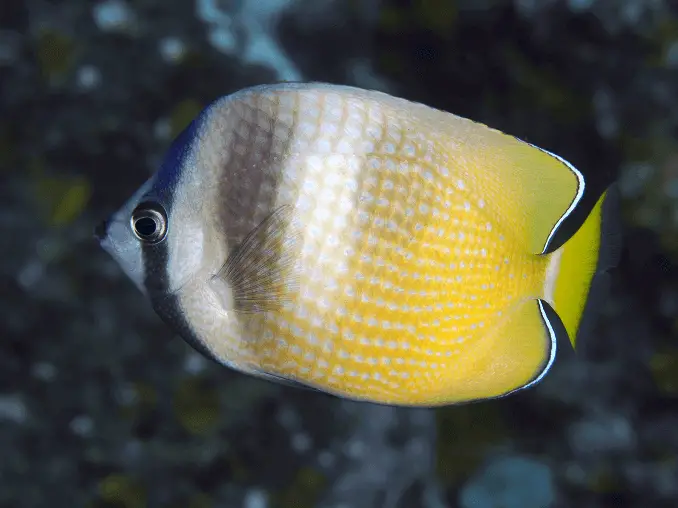 There are not many butterfly fish that are applicable to students as a result of their diet; However, Klein's butterflyfish is an exception.
There are not many butterfly fish that are applicable to students as a result of their diet; However, Klein's butterflyfish is an exception.
Compared to the different species listed in this overview, it needs a large tank and can be kept with members of the same species in case they are all released at the same time.
This fish would require a lot of open swimming home and rocks for cover. It is not reef safe, so we recommend protecting it in a fish-only tank or on live rock.
Quick stats:
- Minimum tank size: 120 gallons
- Maximum measurement: 6”
- Care stage: simple
- Temperament: Pacific
- Weight reduction plan: Omnivore
Angelfish of coralline magnificence
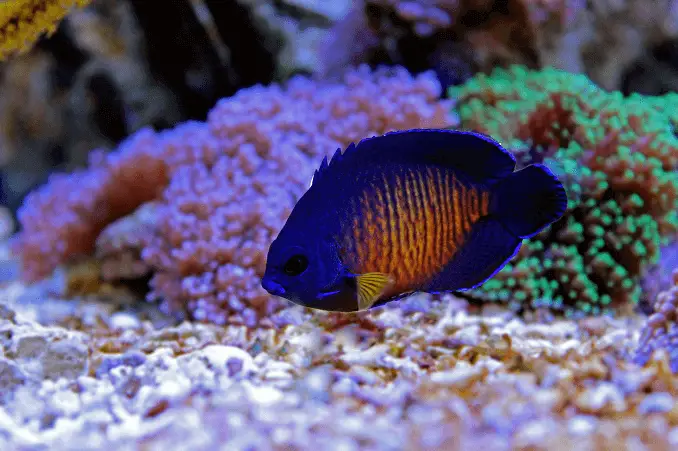 Also known as twospine angelfish or dusky angelfish, the Coral Beauty is among the best angelfish to care for.
Also known as twospine angelfish or dusky angelfish, the Coral Beauty is among the best angelfish to care for.
It is a really pretty fish, with an intense blue body and head, with yellow reflections. The coral magnificence is a very energetic but peaceful fish.
They are often good eaters and can graze on algae in your tank, so having a long tank life is an advantage.
Quick stats:
- Minimum tank size: 70 gallons
- Maximum measurement: 4”
- Care stage: simple
- Temperament: Semi-aggressive
- Weight reduction plan: Omnivore
Chalk bass
One of the many smaller and more peaceful bass in the Serranidae family is the Chalk Bass, a hardy fish that is comparatively peaceful.
This fish requires a lot of caves and rocky ledges to hide in and can be kept with many other group fish in addition to its own species (as long as they are added at the same time).
In the transition stage to an aquarium, they are usually solitary and even prone to jumping, so you will only have to protect the lid of your tank.
Quick stats:
- Minimum tank size: 30 gallons
- Maximum measurement: 3”
- Care stage: simple
- Temperament: Semi-aggressive
- Weight reduction plan: Carnivore
Ocellaris Clownfish

This hardy fish eats a lot and is easy to keep in your home aquarium. The female is usually larger than the male and once they mate, they will continue to spawn as long as they live.
They should not be housed with aggressive species; If you house them with anemone, you should keep them in a larger tank so that it matches well with the size of the anemone.
Quick stats:
- Minimum tank size: 30 gallons
- Maximum measurement: 3”
- Care stage: simple
- Temperament: Pacific
- Weight reduction plan: Omnivore
black molly
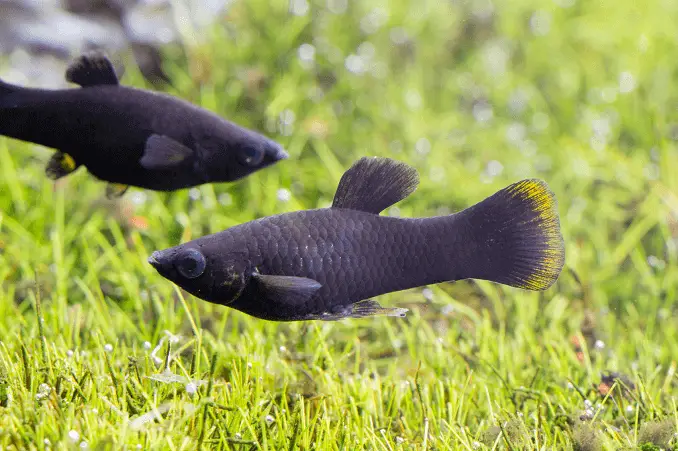 Mollies can acclimate to live in both freshwater and saltwater. The black molly is a completely black fish with fast fins. The male has a pointed anal fin and a larger dorsal fin, while the female has a gestation spot.
Mollies can acclimate to live in both freshwater and saltwater. The black molly is a completely black fish with fast fins. The male has a pointed anal fin and a larger dorsal fin, while the female has a gestation spot.
They prefer a planted tank and a good filtration system because of the amount of waste they generate. It is very peaceful and makes an excellent group fish.
The black molly is a life carrier and can give birth every 60-70 days.
Quick stats:
- Minimum tank size: 30 gallons
- Maximum measurement: 3”
- Care stage: cheap
- Temperament: Pacific
- Weight reduction plan: Omnivore
Six-line Napoleon
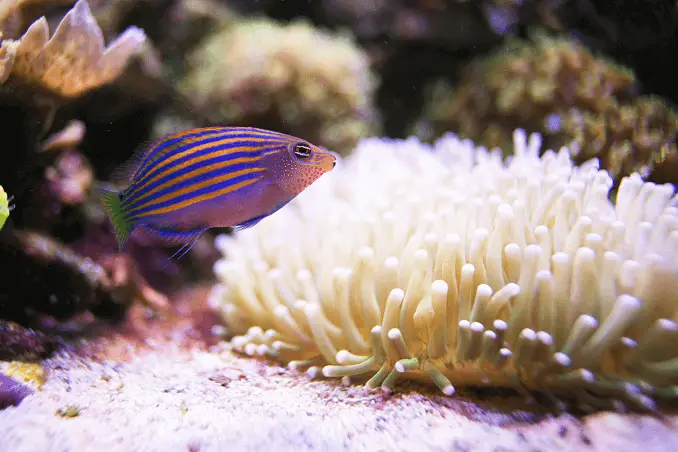 There are a wide variety of wrasses belonging to the Labridae family, but the six-lined wrasse is among the prettiest. It has a bright coloration, which only intensifies inside the male when he is courting.
There are a wide variety of wrasses belonging to the Labridae family, but the six-lined wrasse is among the prettiest. It has a bright coloration, which only intensifies inside the male when he is courting.
This fish requires a quiet aquarium, with plenty of hiding places and a good diet. They are known to feed on live foods and also on undesirable pests.
They are also known to behave aggressively towards different wrasses and smaller, more docile fish.
Quick stats:
- Minimum tank size: 30 gallons
- Maximum measurement: 3”
- Care stage: cheap
- Temperament: Pacific
- Weight reduction plan: Omnivore
Cardinal Fish Pajamas
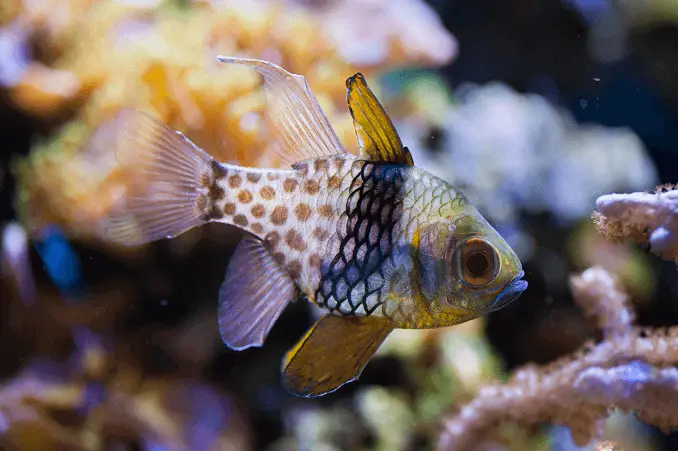 This is usually a nice trying fish with a splash of varied colors. With a yellow-green face, large orange eyes and orange dots once again, it has a peaceful nature and is a super group fish.
This is usually a nice trying fish with a splash of varied colors. With a yellow-green face, large orange eyes and orange dots once again, it has a peaceful nature and is a super group fish.
It is best kept in small groups and should be housed with totally different peaceful fish. It is a fairly slow swimmer and needs many corners to hide. Vegetation and rocks work well.
If kept in a school, they can form their own hierarchy, but unlike some schooling fish, they are not aggressive toward other cardinals.
Quick stats:
- Minimum tank size: 30 gallons
- Maximum measurement: 3 ½”
- Care stage: simple
- Temperament: Pacific
- Weight reduction plan: Carnivore
Chromis blue/green
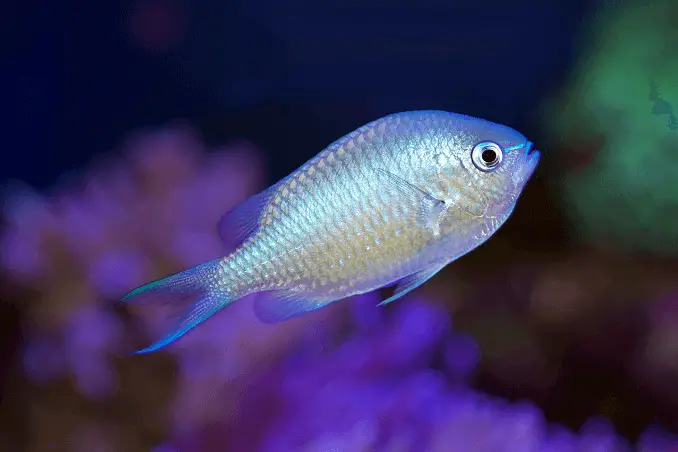 Another favorite among reef aquarists is Chromis viridis. With beautiful colors, it has a light blue dorsal fin that turns green as it reaches the bottom.
Another favorite among reef aquarists is Chromis viridis. With beautiful colors, it has a light blue dorsal fin that turns green as it reaches the bottom.
It can be saved with virtually all groups of fish, corals and invertebrates due to its very peaceful nature.
In their natural environment, they thrive in a school and small schools look pretty in a home aquarium.
Quick stats:
- Minimum tank size: 30 gallons
- Maximum measurement: 4”
- Care stage: simple
- Temperament: Pacific
- Weight reduction plan: Omnivore
real grandmother

It grows to a relatively small size and likes to have plenty of rocks and caves to hide in.
Although they are peaceful with different fish of their own size and shape, they are often aggressive with their own shape, so protect them individually.
Quick stats:
- Minimum tank size: 30 gallons
- Maximum measurement: 3”
- Care stage: simple
- Temperament: Pacific
- Weight reduction plan: Carnivore
Flame Hawkfish
https://www.youtube.com/watch?v=wjAYJlk_W5Y
Also known as purple hawkfish, this bottom-dwelling fish has a vibrant pink body, with darker color on the eyes and dorsal fin.
They should not be housed with small shrimp, and it is important to be careful when housing them with different bottom-dwelling fish, such as blennies and gobies.
They like to spend much of their time perched, ready for their prey, so it is necessary to have a large amount of rock.
Quick stats
- Minimum tank size: 30 gallons
- Maximum measurement: 4”
- Care stage: simple
- Temperament: Semi-aggressive
- Weight reduction plan: Carnivore
Which saltwater fish is right for you?
Many of the species listed below are good beginner fish that perform well in group tanks.
The main consideration you should make if you are interested in protecting one of these species is whether or not they are compatible with the rest of the fish in your tank.
You will probably find that some breeds such as tangs, which are adequately found in local fish stores, should not be included in this article.
This is because they are more difficult to keep up with and require additional experience.
If you're just getting started in the saltwater passion, make sure you first gain some experience guarding hardy fish. Saltwater tanks require real water conditions, and while you can probably get away with small modifications to the water chemistry in a freshwater tank, this can be lethal in a saltwater tank.
